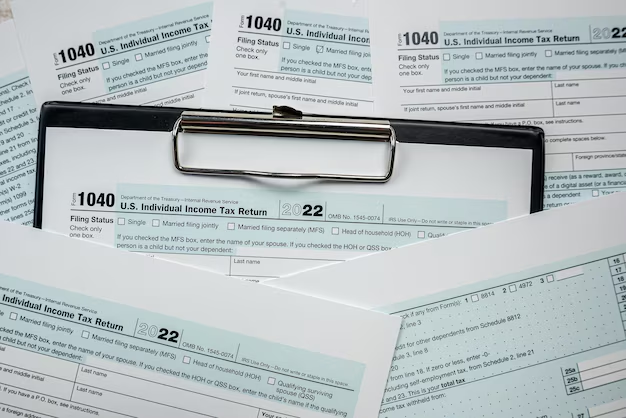Understanding 1099 Forms: Key Deadlines and Practical Insights
Tax season can be a stressful time for many, especially if you're a freelancer, contractor, or small business owner. Understanding when your 1099 forms are due is crucial for staying compliant and avoiding penalties. This comprehensive guide aims to provide clear information about 1099 filing deadlines, plus practical insights to assist you in managing your tax responsibilities effectively.
Why Understanding 1099 Deadlines is Crucial
If you're receiving or issuing 1099 forms, it's important to know the deadlines to ensure you or your workers report income accurately. 1099 forms are essential for reporting various types of income not covered under regular wages, including income earned as an independent contractor, interest, dividends, and even rents. Missing a deadline can result in penalties, so let's dive into the specifics of when 1099 forms are due.
The General Deadline for 1099 Forms
The primary deadline for sending out most 1099 forms to recipients, such as freelancers or consultants, is January 31st. This deadline applies to forms like 1099-MISC, 1099-NEC, and 1099-DIV. You need to ensure that recipients have the forms in their hands by this date so they can prepare their tax returns.
Example:
1099-NEC: This form is used to report nonemployee compensation. It must be delivered to recipients by January 31st.
1099-MISC: Used for various types of income, must also be sent to recipients by January 31st.
Filing with the IRS
After you send out 1099 forms to the payees, the next step is to file them with the IRS. For most 1099 forms, you must file them by February 28th if submitting on paper or by March 31st if filing electronically. Electronic filing is recommended for its ease and efficiency, especially if you're managing several forms.
Summary of Key Dates 🗓️
Here’s a quick summary to keep your filing on track:
- January 31st: Forms due to recipients.
- February 28th: Forms due to the IRS (if filing by paper).
- March 31st: Forms due to the IRS (if filing electronically).
Diving Deeper into Different 1099 Forms
The world of 1099s is vast and can seem convoluted. Let's examine the various types that you might encounter or be required to use:
1099-NEC (Nonemployee Compensation)
This is the form used most frequently by those hiring freelancers or contractors. With the surge in gig and freelance work, the use of 1099-NEC has become commonplace. Remember that any nonemployee compensation over $600 must be reported using this form.
1099-MISC (Miscellaneous Income)
From rents to royalties, 1099-MISC covers a lot of ground. This form is a catch-all for income types that don't fit neatly into other 1099 categories. Pay special attention to what you’re reporting here to ensure all income streams are properly documented.
1099-DIV (Dividends and Distributions)
If you own stocks or other investments, you're likely to receive a 1099-DIV. This form reports dividend income you’ve received and is crucial for anyone with an investment portfolio.
Key Considerations for Different Forms
Each type of 1099 form has unique requirements and deadlines. Here are some considerations for keeping things in order:
- Separate Forms: Different types of income might require separate 1099 forms, so familiarize yourself with what's needed for each type.
- Double-Check Amounts: Mistakes in amounts can lead to IRS notices or audits, so be meticulous in your calculations.
Avoiding Penalties and Common Pitfalls
Failing to issue or file 1099 forms on time can lead to hefty penalties. Here’s how to stay in the clear:
Penalties for Late Filing
If a form is late, the penalty is usually $50 if it's filed within 30 days, escalating to $110 between 31 days late and August 1st, and $270 after that. For willful neglect of filing, penalties can exceed $500 per form.
Common Mistakes to Avoid
- Misidentifying Contractors: Ensure those receiving 1099s aren’t misclassified employees.
- Incorrect Information: Double-check all identification numbers and details.
Tips for Timely Filing 📤
- Use Tax Software: Leverage accounting software for automated filing.
- Schedule Reminders: Utilize digital calendars to alert you to upcoming deadlines.
Practical Steps for 1099 Preparation
Procrastination is the enemy when it comes to tax forms. Here's how to streamline your preparation:
Gather and Organize Information
Start early in the year by organizing payee information, contracts, and payments. Maintain an organized database to simplify this task as January approaches.
Use Reliable Software
Choose software that simplifies the process, offers automatic form generation, and syncs with your accounting systems. Comparisons and user reviews can guide you in selecting effective tools.
Validate Data
Before filing, it’s wise to verify all compiled information. Use the IRS's TIN Matching Program, which helps identify inaccuracies in tax identification credentials.
Steps for Ensuring Accurate Reporting ✔️
- Double-check Payments: Cross-reference bank statements with your records.
- Ensure Correct Payee Info: Check names, addresses, and TINs for accuracy.
Conclusion: Spotless Compliance and Peace of Mind
Navigating the world of 1099 forms can be complex, but a keen understanding of deadlines and careful preparation can alleviate much of the stress associated with tax season. By starting early, using the right tools, and paying close attention to detail, you can file your 1099 forms accurately and on time, avoiding penalties and ensuring a smoother tax-filing experience.
Empower yourself with the knowledge and strategies outlined in this guide, and you'll find 1099 form management more manageable and far less daunting. The key to successful tax filings lies in preparation and diligence, keeping you ahead of the curve.
